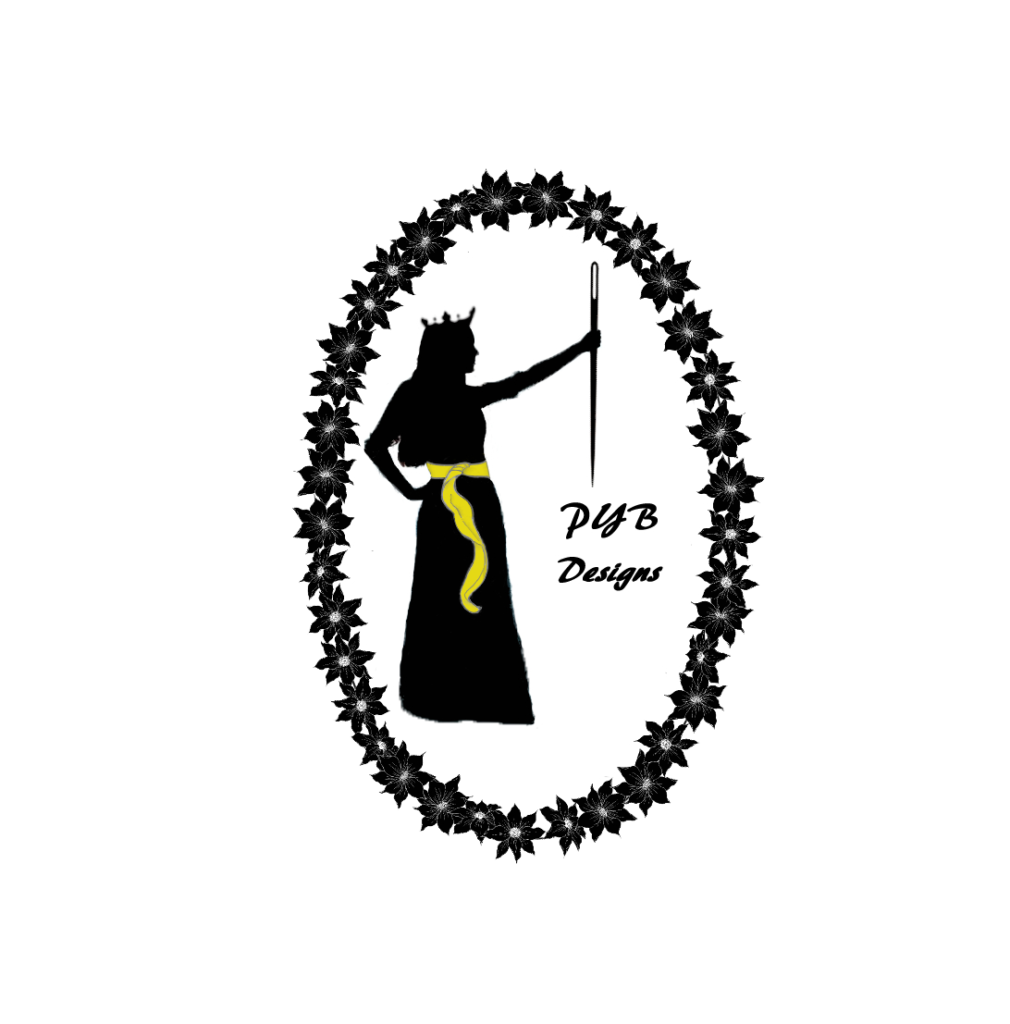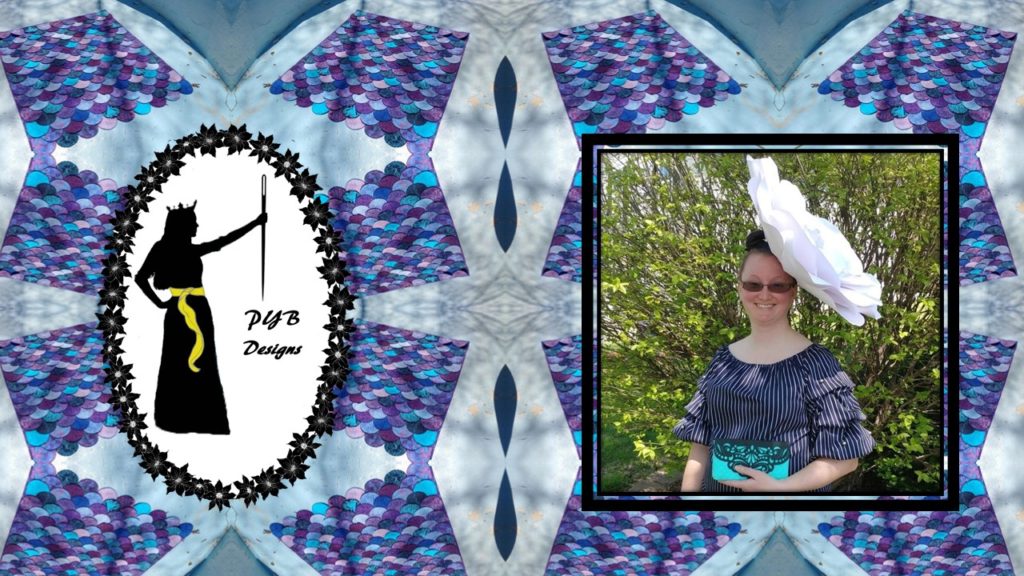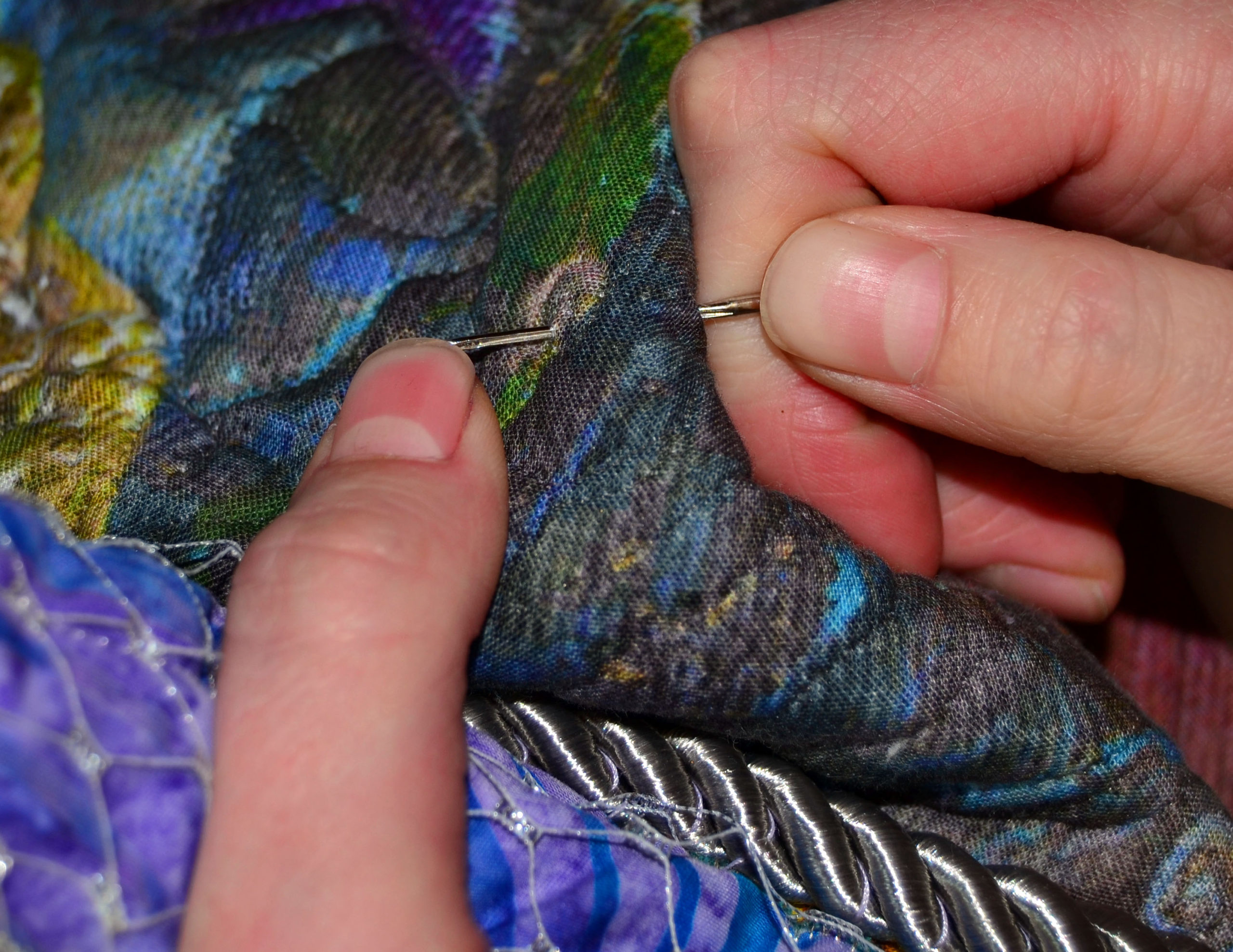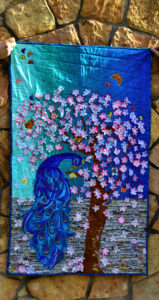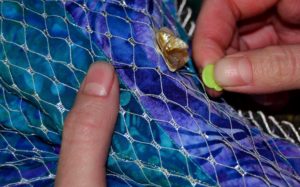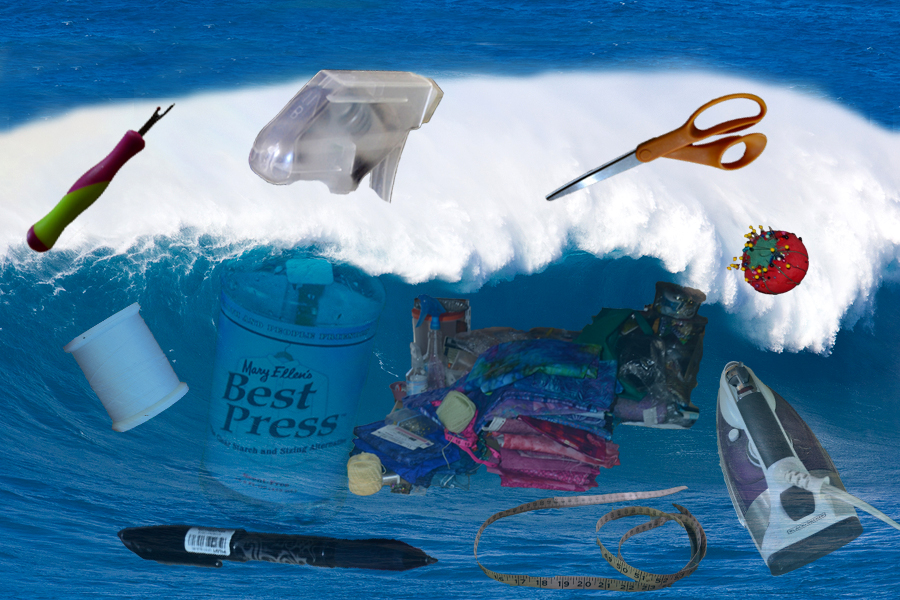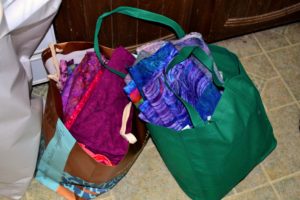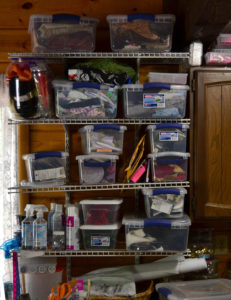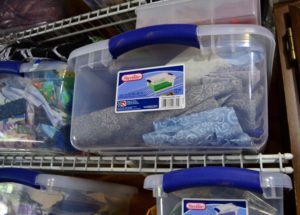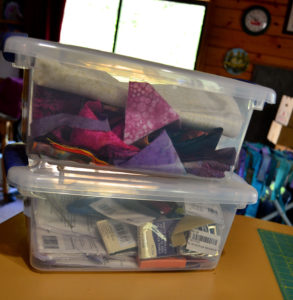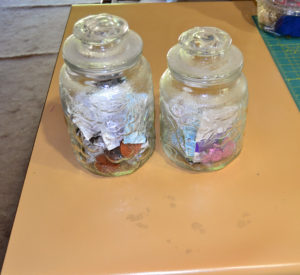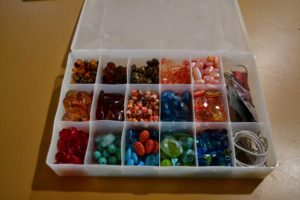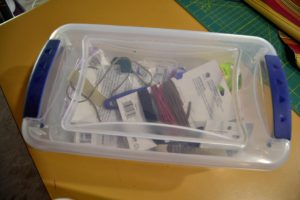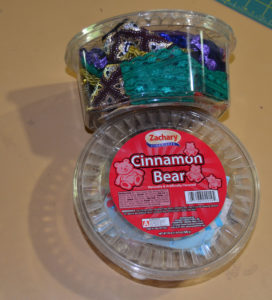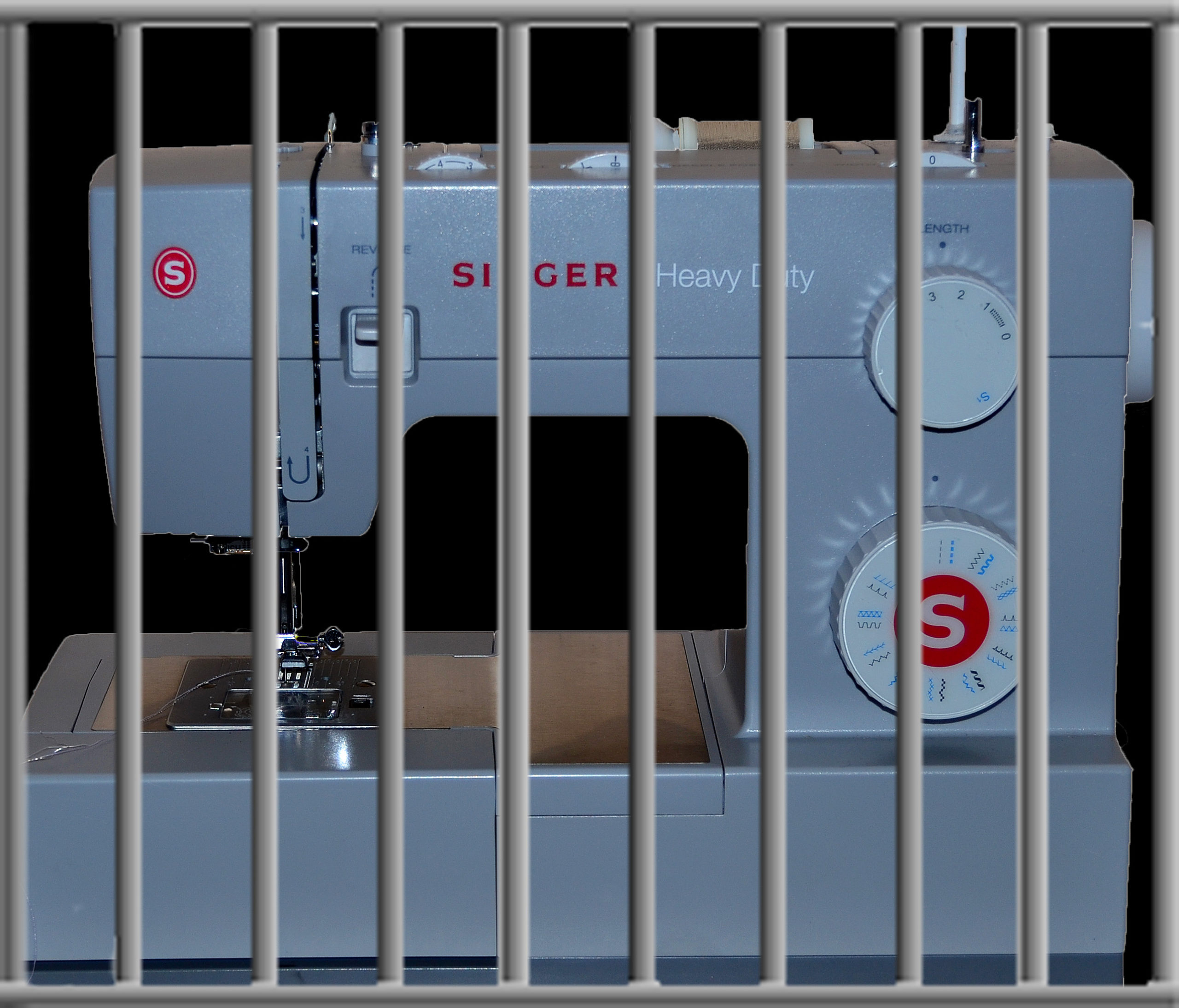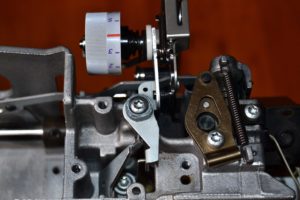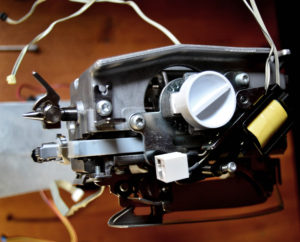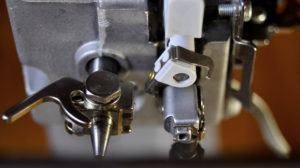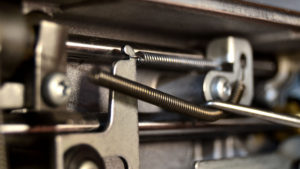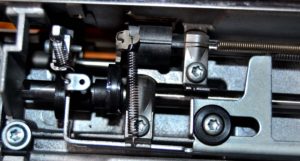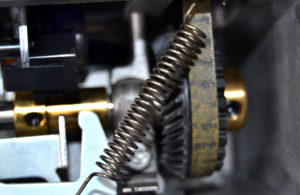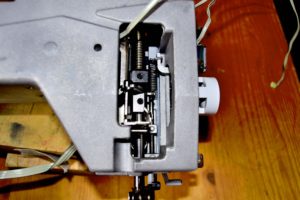Living & Quilting Dangerously
Last week I went to a Tattoo & Piercing Parlor.
It wasn’t the first time I’d been there but I sincerely hope it will be the last…and I wasn’t there to get a tattoo either. I’m a good girl, I am!
I went to the piercing parlor to get a Daith piercing in my ear to try to help my migraines. I confess to yelling when he pushed that needle through my cartilage – that sucker hurt.
However, as I sat there quietly bleeding, it occurred to me. I do this to myself all the time – when I sew – and I bet you do too.
Sewing is a physically risky business because essentially we’re working with knives. Of course, we like to give them euphemisms like scissors, pins & needles, and rotary cutters, but any seamstress can tell you…they’re really knives.
Personally, I’d be amazed to hear that there is one seamstress out there that hasn’t had a too close encounter with the sharp end of one of these supplies. They are necessary to our work, but they can be very painful.
Addiction – And How Not to Treat It
Here again is where the whole idea of addiction can raise its head.
When I was sewing my Peacock Panel, I had to pin every flower in place before I could sew – no handy Wonder Under here.
I used long, sharp quilting pins to secure those slippery leaves to the thick background. Those very helpful pins found no problem scraping along my forearms and jabbing into my chest as I sewed.
I’m pretty sure I yelled more than once, and when I was done, I did look like an addict with needle tracks all along the insides of both forearms. Talk about quilting dangerously.
But it was worth it.
Michael thinks I’m nuts sometimes, but even he has to admit the end result was beautiful.
That’s the gritty truth of an artist’s addiction to his/her craft. No matter the ill immediate consequences that we suffer personally, nothing will deter us from achieving our goal of adding a bit of beauty to this old world.
Maybe we shouldn’t even want to. Without a bit of pain no one would have ever painted the Mona Lisa, or built the Parthenon, or invented quilting in the first place.
Those Who Love Us
Speaking of my darling Michael, have any of you ever read or heard Hank the Cowdog books? They are positively hilarious – especially the audio book versions – but when you read about Slim Chance, just substitute Michael’s name instead.
This man of mine never moves fast, leans as soon as he stops and takes forever to think things through.
To his credit, his thinking is vastly different from mine and he often comes up with a solution that would never occur to me. He’s awesome, but I digress.
The point is that I’ve only seen him move fast 3 times:
- When Suzanna decided an anthill was a perfect place to play
- When the kids were playing in the ocean surf and a long dark shape showed itself in an oncoming wave
- And when I sewed through my thumbnail
The needle had pulled out of the machine and was sticking out the fleshy side of my thumb through my thumb nail. That was not fun. Michael really jumped that time – I’m pretty sure that I screamed loudly. Being Michael, he promptly got his needle nose pliers and pulled.
Amazingly, while it was the first time I’d sewed through my thumb nail, it wasn’t the first time I’d sewn through the side of my thumb.
Last year, I was having vision problems in my left eye. But I live on the edge and do quilting dangerously, so instead of stopping, I kept leaning closer and closer to see what I was sewing and actually scraped the end of my nose with the needle. Now, that would have hurt!
Consequences of Quilting Dangerously
I have a special set of quilting pins that are about 3” long and sharp as lances, consequently many times I’ve had to wash out spots of blood from being stabbed. On my dangerous quilting journey I also:
- Been burned with hot glue
- Shoved hand sewing needles under my fingernail
- And glued various body parts together
But it’s all worth it to me – because like any true addict I like the results. I read about one quilter who had actually glued her bottom to the floor. I found that hilarious but not surprising.
So there I am getting pierced and looking at the piercing guy. He’s tattooed from neck to ankles and I started thinking about how many needle punctures THAT took – and he did it on purpose! Now that’s addiction – of a different kind, but addiction nonetheless.
So maybe we’re not as insane as we may seem – when we keep on quilting despite the hazards – and we have something to show for it at the end of the day. And, at least our needle marks aren’t permanent.
